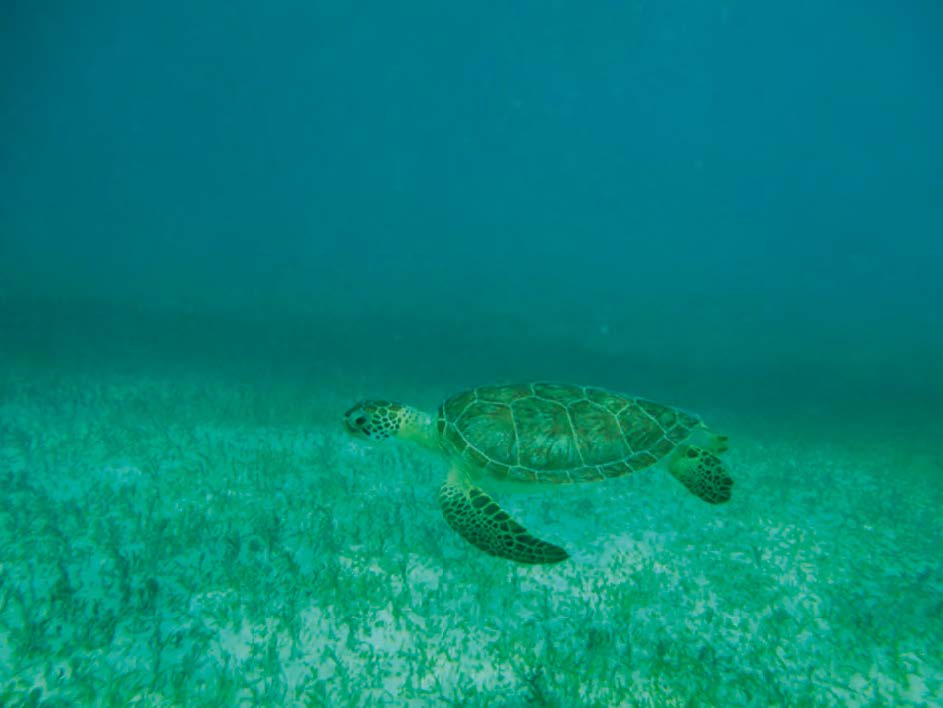Already damaged by the use of anchors, the food pantry for our favorite green sea turtles has in the past few years also been invaded by a new species that is the object of tight surveillance.
Three American scientists, including Doctor Jeremy Kizska, were in Saint Martin on November 6-12 to observe the interaction between these turtles, which feed on the underwater plant beds, and Halophila stipulacea, a kind of sea grass. This invasive species was introduced via boat anchors and water from ballasts, and little-by-little takes up more-and-more space in the underwater herbier, where it is in competition with Syringodium and Thalassia, the two native species. From the International University of Florida, the scientists were hosted by the Réserve Naturelle, which had done a study on the same species in 2014. The three academics planned their project to span two years, and will soon return to our island. Their research is to estimate the density of the green sea turtle population, and study their feeding behavior in targeted zones. To be precise: comment do the turtles react when faced with this new species? The idea is to equip certain turtles with a GPS and use underwater cameras to see what they select as food, if they go for the new species or if they simply munch on what is easily within their reach. The scientists had to wait for authorization from the DEAL in order to take various samples from the turtles in order to better understand their nutritional habits thanks to isotopic analysis. At Tintamare, so far they have taken samples of the herbier in order to make a map, and they have counted the number of turtles present at various plant beds at different times of the day.

















